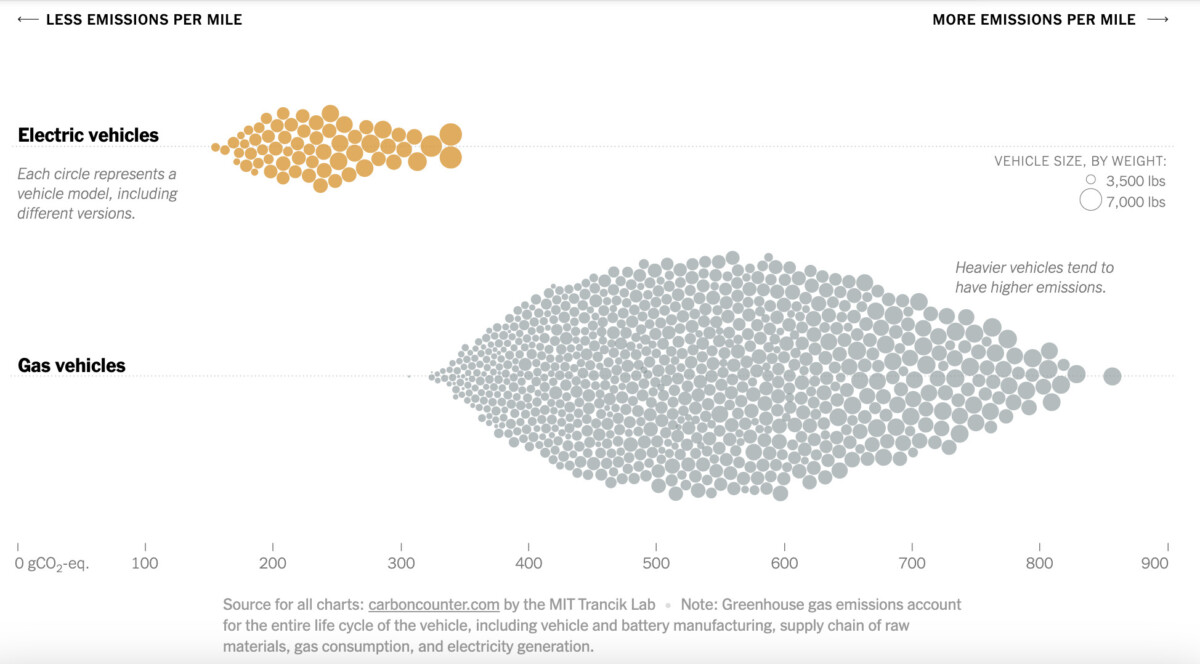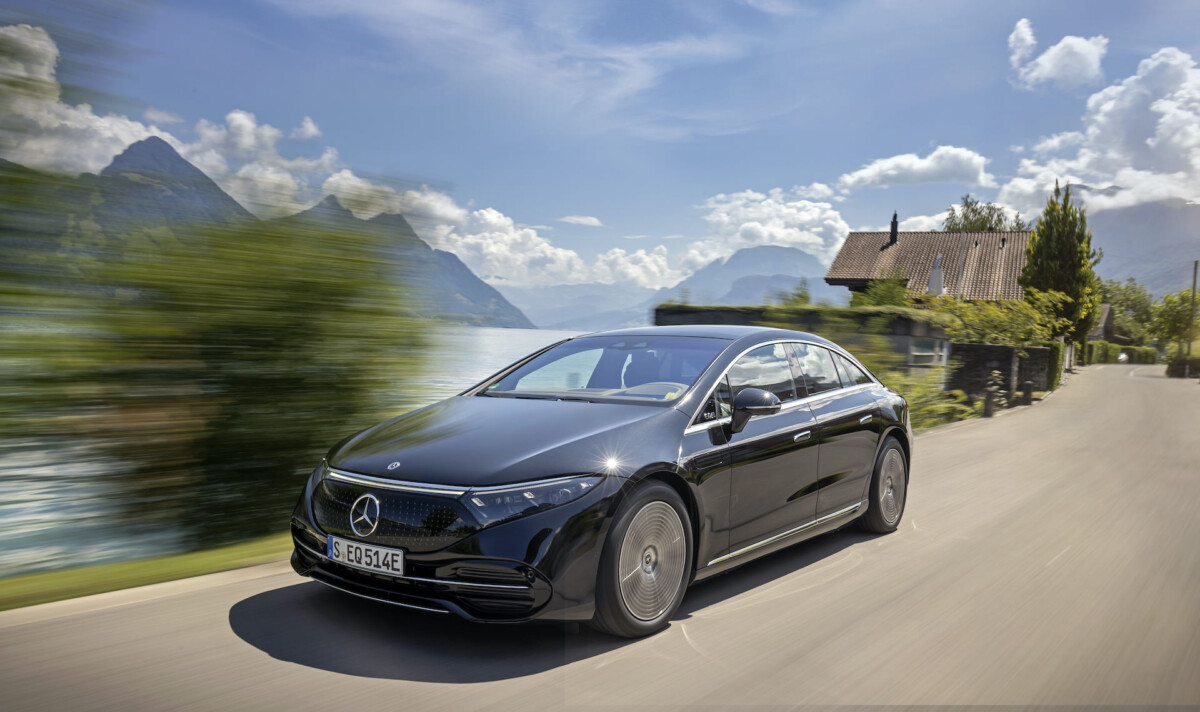A recent study relayed by the New York Times casts doubt on the electric car. Electric pickups are more polluting than small compact thermal cars. Media even talk about SUVs. But it’s not that simple, we explain everything to you.
The electric car is seen by some as a clean car. This is not the case, since it pollutes indirectly, during its production phase, and during recharging, through the electricity network. On the other hand, it is true that it does not emit CO2 since it has no exhaust pipes due to the absence of combustion of a fossil fuel (gasoline or diesel).
A few months ago, we published an article entitled “why some electric cars pollute more than a thermal sedan (but not in France)”. This followed an American study, which focused on the pollution of the Hummer EV, the 100% electric pickup from the American manufacturer GMC. The conclusions of the study were that it polluted more than a small thermal car… but not in France, thanks to our electrical energy, which is mainly low-carbon.
Large electric cars compared to small petrol cars
A new American study looks at the global warming potential of large electric cars compared to small thermal cars. It is the famous wall street journal who sticks to it, aided by the open access data of carboncounter. It is a tool set up by MIT which makes it possible to calculate the CO2 emissions of a car over its entire life cycle, according to various parameters. Among them, we find in particular country of manufacture or country of use. As we saw in our previous article, these two parameters are extremely important, since they lead to different results.

Thus, according to the data, in the United States and as can be seen with the infographic of the American media, thehe largest electric cars emit as much CO2 over their lifetime as the least fuel-efficient thermal cars. This is for example the case of the Ford F-150 Lightning which then emits as much greenhouse gas as a small Mitsubishi Mirage. The Riviant R1T does even worse, emitting as much CO2 over its lifetime as a Honda Civic.
Electric cars “cleaner” than thermal ones
But beware, there are three pitfalls to avoid here. The first, very simple, is that you have to compare what is comparable. So, a thermal car will emit much more CO2 than its electric version. The second is that it is necessary take into account the electrical network that supplied the production plant and which will supply the charging stations. Finally, the third is that it is necessary to take into account the evolution of the second point in time since electricity grids will use more and more low-carbon energy.
To take a concrete example, the thermal Ford F-150 (V6 2.7L Ecoboost) emits approximately 300g CO2/km without taking into account the emissions linked to its production. The Lightning electric version emits approximately 130g CO2/km in the US without taking into account the production of its batteries, but only… 20g of CO2 if recharged in France !

Of course, we must add the greenhouse gas emissions that were released during the production phase of the car and in particular its battery. But even in this case, as we saw above, the electric car is much less polluting than its thermal counterpart.
In the United States, the electric version of a car emits over its life cycle (production, use and recycling) approximately twice less greenhouse gases than its thermal version. In France, it can be six times moredepending on the model and its place of manufacture.
The SUV problem
However, this new study highlights a real problem: that of the format of cars, whether electric or not. It is clear that an SUV will consume more than an equivalent equivalent sedan. We see it with the Tesla Model Y Propulsion with an announced autonomy of 455 km against 510 km on the Tesla Model 3 Propulsion with an identical battery and 150 kg less on the scale. This actually results in higher consumption.

The question that arises is therefore not to know whether it is better to switch to an electric car or to stay in a combustion engine. The answer to this question is very simple as we have just seen above since the electric car will have a much lower impact than the thermal car on global warming.
On the other hand, the question is whether we really need so many heavy, big and tall cars, that is, SUVs. Recently, the International Energy Agency sounded the alarm. The share of SUVs in the sale of new cars rose from 8.5% worldwide in 2010 to 31.4% in 2022. Worse, within electric cars, this share reached 51% in 2022 against 37% in 2020.
A weight penalty… or consumption?
A weight penalty is already in force in some countries, such as France. But isn’t this ultimately a false good idea? More than weight, the most important element of a car is its efficiency, in other words its fuel consumption. The less energy it consumes, the less harmful it will be for the planet.
In addition to banning the sale of thermal cars, shouldn’t we impose a bonus malus linked to consumption ? Since it is possible in practice to have heavy cars that consume less than lighter cars. This is demonstrated by Mercedes with its EQS sedan and its 2.5 tonnes given for a theoretical consumption of 14 kWh / 100 km (without taking into account losses during recharging). To compare, we can take the Tesla Model Y Grande Autonomie and its 2 tons which announces a similar theoretical consumption despite 500 kg less on the scale.

And that’s normal, because the weight has a fairly low impact on the consumption of cars at high speeds. In town, consumption will be more impacted by overweight. But outside built-up areas, it is the aerodynamics of the car, and therefore its shape, which have a greater impact than the weight on consumption.
The electric car will not save the planet, but will help
To sum up, yes, a (very) large electric car can in some cases emit more greenhouse gases than a small thermal car. But only in certain countries, and not in the long term since carbon energies (coal, gas, fuel oil, etc.) should give way to low-carbon energies (nuclear and renewable energies).

This is the whole spirit of part three of Elon Musk’s Master Plan. This plans to switch the entire global car fleet to electric cars, in order to halve the amount of energy needed for light transport, as summarized in the media Numerama.
Let’s not forget that the electric car always emits fine particles during the driving phases, in particular because of the tires. Public transport and soft mobility, such as bicycles (electric or not), scooters and walking are often a better alternative.
Our colleagues from Numerama are launching Watt Else, their newsletter dedicated to the mobility of the future. Sign up here to make sure you get the first issue!
